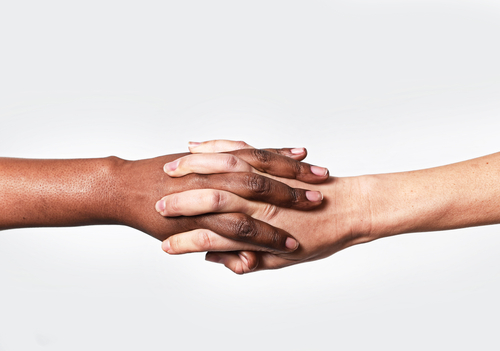Lynching legacy ties that bind women’s friendship
“The hanging.”
For years, Karen Branan, a white woman from Georgia, kept at a safe distance the haunting words that her grandmother had spoken. Branan was an inquisitive journalist, but she refused to explore a hanging that her grandmother had said was one of her most unforgettable memories. She was afraid of what she might learn.
But in 1986, when she learned that she was going to have a racially mixed grandchild, Branan felt compelled to dig up the truth. She discovered that her relatives had been part of a mob that had lynched four black people — three men and a woman — in Hamilton, Georgia, in 1912.
Branan turned what she learned into a book, “The Family Tree,” that was published two years ago.
The book eventually made its way into the hands of Jackie Jordan Irvine, an Alabama native and a professor emeritus of urban education at Emory University. Irvine, who is Black, came across the name Milford Moore, a grandfather generations removed. He was related to John Moore, one of the lynching victims.
The connection caught her by surprise.
She had never heard of the lynching or that a relative had been a victim. So Irvine sent an email to Branan, and the two have struck up an unlikely friendship: a black woman whose ancestor was lynched, and a white woman whose ancestors did the killing.
The two grew up in neighboring cities — Irvine, 70, in Phenix City, Alabama, and Branan, 76, in Columbus, Georgia. With the racial divide, they lived worlds apart.
The two joined The New York Times on Facebook Live on Wednesday night for a discussion about history, their relationship and race in the South. Here are some excerpts from the conversation.
Irvine, on her reaction to learning of the lynching: “It was shocking. I didn’t know how to feel about it. But immediately, I thought about my grandmother, who we just loved dearly, what must have happened when she knew that this event had occurred in this county.
“They lynched them on the grounds of the black Friendship Baptist Church. You can’t get anymore horrific than lynching people on the black church grounds. It wasn’t just the four victims, it was an entire black community that was absolutely terrorized by this event.”
Branan explained that her distant cousin Norman Hadley, a nephew of the local sheriff, had been murdered. Hadley was known for chasing after young women, and he was in pursuit of a 14-year-old black girl. The three black men lynched were close to the girl — her preacher, the Rev. Burrell Hardaway; her father, Eugene Harrington; and her boyfriend, John Moore. They had been accused, without proof, of murdering Hadley.
“This was an era in which W.E.B. DuBois in The Crisis, the magazine that he edited, was calling for black men to protect black women, and to, quote, risk lynching if need be to do this. So Burrell Hardaway was preaching, calling out Norman Hadley by name.
“They all looked suspicious, but guess what, they were not. Later, we found out that a white man had killed Norman Hadley. He was also chasing this 14-year-old.”
Branan said that the woman who was lynched, Loduska Crutchfield, was believed to be the first female lynching victim in Georgia.
“She was not a suspect in Norman’s murder, but she was supposed to be a star witness. She refused, she refused, so she was a martyr.”
Branan also learned of a surprising racial back story. Moore, the youngest of the victims, was a distant cousin of hers because one of her white ancestors had children with a black woman. Her white family members knew they were killing a black family member.
“What I discovered was that the racially mixed Moore family was very much involved with the so-called white Moore family up to the time of this lynching. This lynching was, in and of itself, a message lynching to say to black and white people: ‘Segregate. We are changing, the South is changing. You must separate now.’ It was a very violent laying down of a line in the sand to keep us apart from one another.”
Branan said that the story of the lynching her family was involved in, along with others, was not just a historic tale.
“The past has not passed. It’s still with us. It’s with us in different forms. Some of those forms are even more pernicious than the old forms. We are living in the past because we have not addressed the past. We have not atoned for the past. We have not even educated ourselves about the past.”
Irvine said: “Black lives didn’t matter then in 1912 when they lynched my cousin John Moore. Twenty-one-year-old black men in America, now they’ve been lynched in another kind of way. Even if you didn’t own slaves, even if your family never attended a lynching or watched it or whatever, white people have benefited politically, socially and economically from a system of slavery and oppression from Mississippi to Maine. It’s not to make white people feel guilty, but it’s to accept the privilege that’s been awarded through a system of oppression.”

